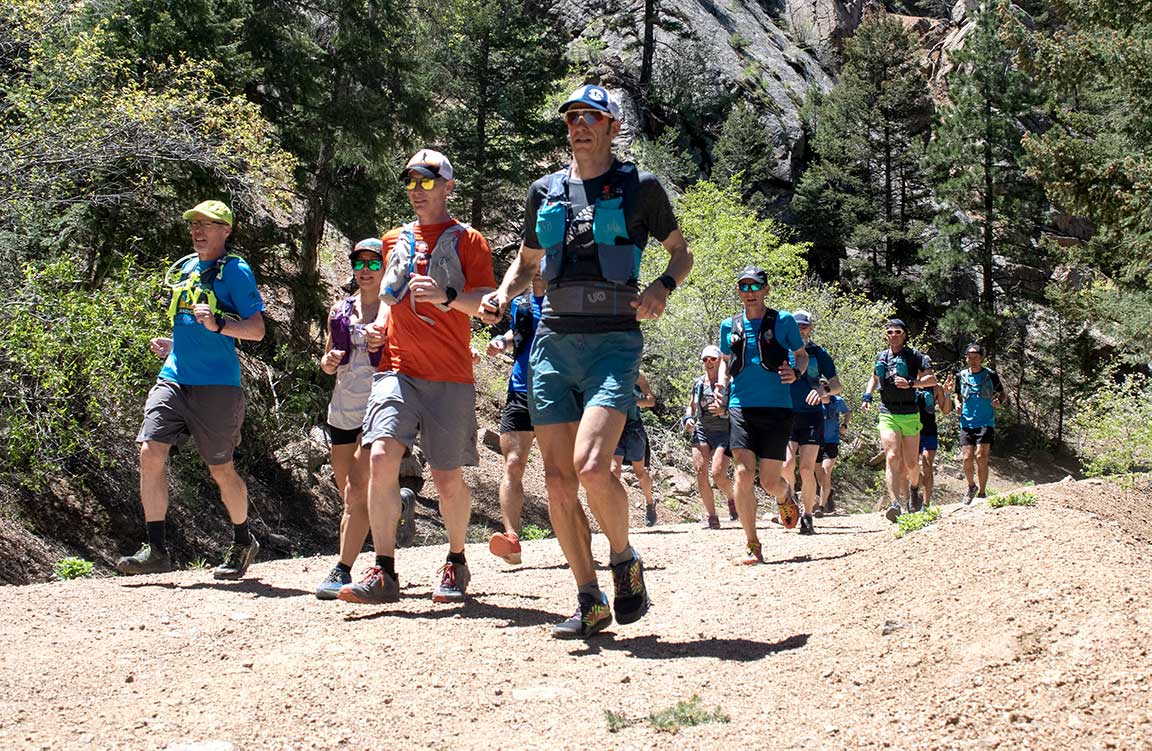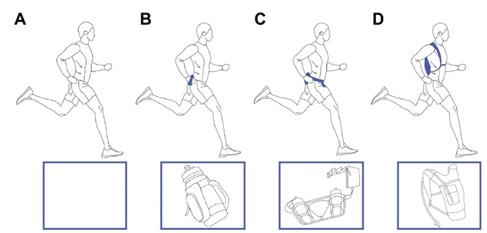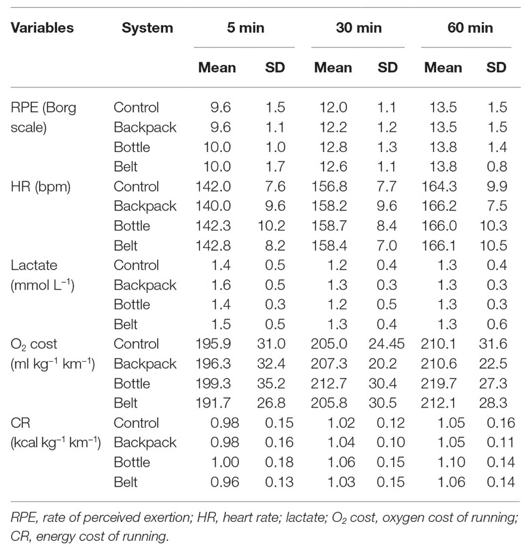
Best Ultrarunning Hydration Systems for Running Economy
By Jason Koop,
Head Coach of CTS Ultrarunning
When Gordy Ainsleigh first finished the Western States Endurance Run in 1974, he did so by drinking from creeks and stashing quarts of Gatorade along the course. He had no softflasks, no handheld water bottle, nor a hydration pack to carry fluids to aid his quest. Heck, the iconic Camelbak would not emerge until fifteen years later in 1989. Hands free hydration changed the way athletes hydrated and fueled. No longer confined to carrying water in bottles, athletes could go longer in hotter conditions without having to worry about the location of the next 7-Eleven. The original Camelback, once confined to a bladder in the back of the pack, has further evolved into hydration systems that include front carrying softflasks, easy access drinking straws and even pressurized bladders, just in case sucking H20 from a tube proves too much of an effort. Runners have their fill (pun intended) of hydration carrying products to choose from.
With all of the options available, it begs the question: Which system is best? While your choices of hydration systems will involve comfort, convenience and personal likes/dislikes, researchers have been focused on what type of carrying system might offer a physiological advantage over another. To get at this answer, they equipped runners with different carrying systems, threw them on a treadmill and then measured physiological and perceptual variables like heart rate, oxygen consumption, RPE, lactate levels and the like. This was a focus of a recent study published in Frontiers of Physiology. The central question they wanted to answer was what carrying system was most economical (or at least impacted running economy the least).
Specifically, they loaded up college age recreational runners with three types of hydration systems: a handheld bottle, a waist pack, and a rear-carrying backpack similar to a Camelbak (see b, c, and d in the figure below). All of the carrying systems were equal in weight and none of the runners were habituated to any one system versus the other. The runners then did a 60-minute run with each of the packs at 80% of their anaerobic threshold (this would be equivalent to a EnduranceRun).

Figure 1- Visual of the different carrying systems. 1) control (no system) b) hand held bottle c) waist pack d) backpack. From Scheer et al 2020
The primary interest of the research team was the differences in running economy that was elicited from running with the three systems. Running economy can be expressed as the oxygen or energetic cost at a fixed speed or per unit distance. The latter of which is referred to as the Cost or Running, and is reported in the table below (along with RPE, HR, and lactate levels). At first glance, the results were not all that startling. As the researchers pointed out, “…carrying a handheld water bottle, waist belt or backpack… exhibited similar physiological changes. Runners’ choice may guide personal preference in the absence of differences in economy.”

Figure 2- subjective and physiological measurements comparing 3 different carrying systems. From Scheer et al 2020
I generally agree with this statement. However, in the context of ultramarathons, sometimes small differences add up to big performance implications when compounded by many miles on the trail, much like that small pebble in your shoe that you choose to ignore. It starts out as a minor irritation and then 20 miles later, you have a blister the size of Texas covering the ball of your foot. And here I think we have one of those cases.
The .05 Calorie Difference
Small changes in ultramarathon settings can have large effects. While the researchers concluded that there were only minor physiological changes between any of the three systems (and there were), a closer look at the differences in the cost of running between the systems might have insight for ultrarunners.
► Free Ultrarunning Training Assessment Quiz
Take our free 2-minute quiz to discover how effective your training is and get recommendations for how you can improve.
To back up a second, the cost of running is just a different mathematical expression of running economy. While running economy is normally reported as a rate of oxygen or calorie expenditure, cost of running is reported as an amount of oxygen or caloric expenditure per unit distance per and normalized per kilogram, if warranted. The research showed that the handled system resulted in a .04-.05 increase in caloric expenditure per kilometer per kilogram versus either a backpack, waist pack and control (which was no pack at all). While this might not seem material to a normal run, if you play it out further a .04-.05 kcal/kg/km increase in the cost of running is worth a few to several gels’ worth of calories in a 100-mile race. Is this significant? Maybe, depending on how much you like gels. The take home message that that in an ultra, a handheld bottle is likely going to require more calories than an equivalent amount of weight carried in a pack or waistbelt.
And since we’re talking about the cost of running, I’d be remiss not to mention that there is a similar, albeit small, increase in the oxygen cost of running between a handled system versus a backpack or bottle system. However, in an ultrarunning situation, this difference in oxygen cost is likely not detrimental as there is oxygen to spare due to the lower intensities. For an athlete racing closer to their lactate threshold or higher intensity, this increase in the oxygen cost of running might make a difference, but for most athletes in the middle of the pack it’s a big nothing burger.
Enjoying This Article? Get More Free Running Training Tips
Get our coaches' best training advice, delivered straight to your inbox weekly.
Overall weight and where it goes does matter
While the research team standardized the weight of the different systems (and rightfully so), real life a bit more complicated. Most handheld water bottles are going to weigh less than most hydration pack systems, ounce for ounce in fluid carrying capacity. And, we know from earlier research that simply adding weight to a hydration pack increases the cost of running. So, in the real world if your carrying system for one liter of fluid in a backpack or waist pack is heavier than the carrying system for one liter of fluids in handhelds, it’ll likely be a wash between which system is more economical. Furthermore, where the weight is distributed also matters, with packs that can equally distribute weight being superior over packs that concentrate weight all on the front or rear (Sheer 2018).
So, what really is the best hydration system?
Here’s I would suggest that you address your hydration situation:
- Find a system that is comfortable and convenient to carry, hold and refill. All the weight shaving in the world is not going make a lick of difference if it takes you half an hour to refill at an aid station.
- If any or all systems are equally convenient and comfortable, pick the one that weighs the least–for the whole system–or for the amount of fluid that you need. Simply put, the most economical system will be the one that is the lightest for the amount of fluid and other gear you need. It might not make a difference in your effort, but could save you a few hundred calories in an ultra. The good thing is that this is pretty simple to evaluate with a bathroom scale.
- If weight is equal, a backpack that distributes weight evenly to the front and back (or as evenly as possible) or a waist pack is likely to be more economical than a handheld bottle(s).
Disclosure: CTS has a partnership with Ultimate Direction, which produces hydration systems in all three categories discussed here: handheld, waist pack, and backpack.


Comments 2
Pingback: When to Start Training For Your First or Next Ultramarathon - CTS Ultrarunning
But for that dreaded bouncing…
Seems like many ultra runners opt for the “soft flasks in front vest pockets” set up. Try as I might I simply can’t get comfortable with the bouncing of the flasks w/every stride. It feels much more comfortable to carry a handheld.